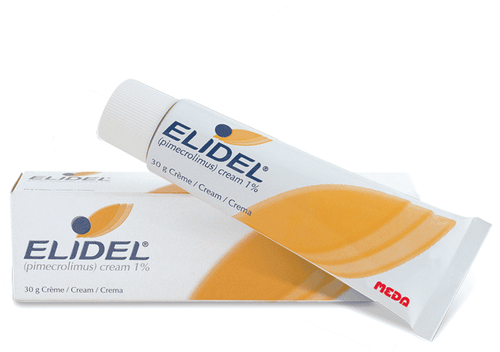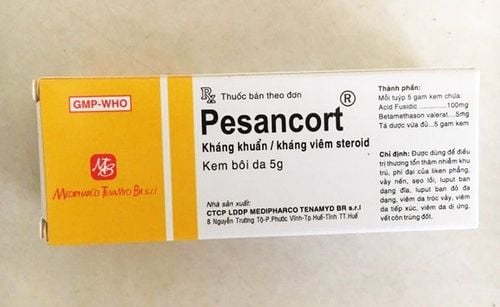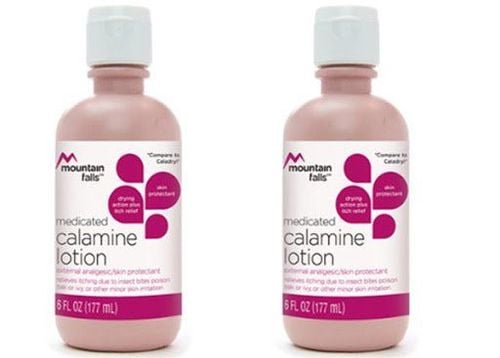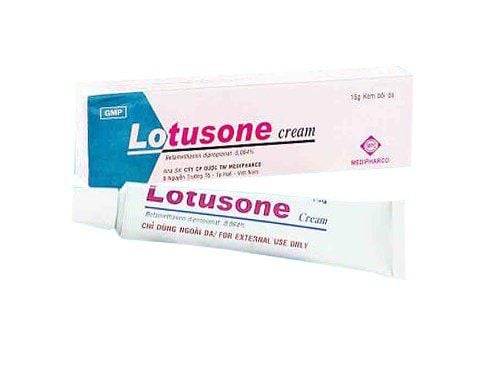This is an automatically translated article.
Genbeclo is a drug used to treat allergic inflammatory diseases, lupus erythematosus,... Ingredients and uses of Genbeclo like? Vinmec experts will help you answer questions in the article below.
1. What is Genbeclo?
Genbeclo drug is a cream drug of Hasan Joint Venture Co., Ltd. The main pharmaceutical ingredients in Genbeclo topical are: Gentamycin (in the form of gentamycin sulfate) 10,000 units and Betamethasone dipropionate 0.64 mg; Clotrimazole 10mg. Packing: Box of 1 tube of 10g
2. Uses of the drug Genbeclo
Genbeclo topical is indicated for use in the following cases:
Collagen disease: systemic lupus erythematosus, scleroderma, dermatomyositis. Some allergic states atopic dermatitis, insect stings and hypersensitivity reactions to drugs. Some skin diseases: Localized, magnified Liken's (Ichen) lesions are flat, psoriatic, exfoliative dermatitis, contact dermatitis, keloids, discoid lupus erythematosus, erythema multiforme (syndrome) Stevens-Johnson). Fungal diseases of the skin, interstitial fungus, interstitial fungus, skin candidiasis: tinea versicolor caused by Malassezia furfur, candidiasis of the vulva, vagina, and onychomycosis and periungual.
3. Dosage
Genbeclo is used topically on the skin. Adults and children will have different dosages:
3.1. For adults: Gently apply a sufficient amount of Genbeclo cream to the affected area twice a day, morning and evening. The treating doctor will decide how long to use the drug, depending on the type, severity and progression of the disease for each person. Do not use the drug for more than 2 weeks because absorption may increase and do not use 45g / week. Note: Do not cover the wound unless directed by a doctor.
3.2. For children Side effects associated with taking the drug are more common in children. Therefore, the drug should only be used as directed by a doctor.
4. Side effects
When using Genbeclo topical, you may experience some unwanted effects (ADRs). The adverse effects of the drug are related to both dose and duration of treatment. Some local side effects:
Burning sensation, mild burning, hyperhidrosis, rash and hypopigmentation, itching, irritation, folliculitis, secondary infection, skin striae, atrophy skin. Rarely allergic dermatitis, urticaria, angioedema. When used in large amounts or for a long time on large areas of the skin, some systemic side effects may occur:
Metabolism: Common loss of potassium, water retention, sodium retention. Endocrine: Cushing's syndrome is common, menstrual irregularities, impaired glucose tolerance, growth inhibition of the fetus and young child. Skeletal muscle is common with muscle weakness, osteoporosis, and loss of muscle mass. Neurological: common, euphoria, insomnia, mood swings, major depression, benign intracranial hypertension. Eyes: Uncommon, glaucoma cataract. Gastrointestinal: Uncommon, pancreatitis, abdominal distention, peptic ulcer, bleeding, esophagitis. Irreversible and cumulative ototoxicity, affecting both the vestibular system (vertigo, dizziness) and the cochlea (deafness, initially with high-frequency sounds). When experiencing side effects of the drug, the patient should stop using it and notify the doctor or go to the nearest medical facility for timely treatment.
5. Contraindications
Genbeclo topical is contraindicated in the following cases:
People who are sensitive to Clotrimazol, Gentamycin, Betamethasone or any component of the drug, Aminoglycoside group or to other Corticosteroids. Some cases of bacterial infections (syphilis, skin tuberculosis, ...), viral infections (herpes, smallpox, chickenpox, ...), systemic fungal infections. The drug must be treated for a full time even if the symptoms are relieved. After 4 weeks of treatment, if there is no improvement, you need to go back to the doctor. When irritation or sensitization occurs, the drug should be discontinued and appropriate treatment instituted. Inform a specialist if there is increased irritation in the application area (redness, burning, blisters, itching, swelling), signs of hypersensitivity. Stay away from sources of infection or reinfection. Do not use the drug for open wounds, avoid contact with mucous membranes, eyes, ears. The drug can be absorbed causing systemic effects, so it is necessary to pay attention to patient monitoring during prolonged treatment. Especially in the face, in the folds, when using the drug on a large scale, when using the compression technique and when used in children. Children may be at increased risk for some unwanted effects, including growth retardation, Cushing's syndrome. Use of Gentamycin may cause overgrowth of non-susceptible microorganisms, including fungi. If superinfection occurs, the drug should be discontinued and appropriate therapy instituted. Prolonged or repeated use may cause secondary bacterial infections.
6. Drug interactions
Do not use large amounts or use for a long time on large areas of the skin can cause some systemic effects:
Tricyclic antidepressants increase the psychosis caused by corticosteroids. Antidiabetic agents or insulin Betamethasone increase blood glucose concentration Glycoside digitalis: Concomitant use with Betamethasone increases the possibility of arrhythmias or digitalis toxicity associated with hypokalemia. Betamethasone dipropionate is metabolised by CYP3A4. CYP3A4 inhibitors or inducers may have a pharmacokinetic interaction with Betamethasone Dipropionate, reducing or increasing the clearance of Betamethasone Paracetamol, Betamethasone increases the risk of hepatotoxicity if taken with high or prolonged doses of Paracetamol. May cause cross-sensitization with other aminoglycoside antibiotics, so long-term topical use should be avoided.
Please dial HOTLINE for more information or register for an appointment HERE. Download MyVinmec app to make appointments faster and to manage your bookings easily.













